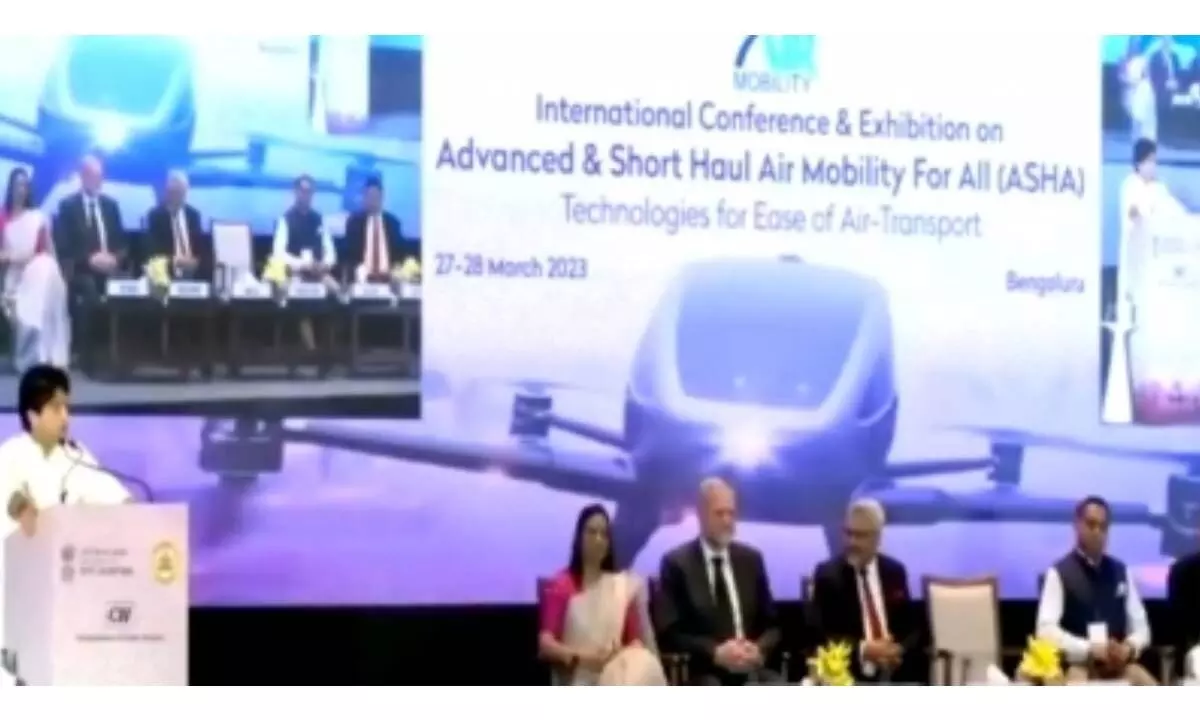India to become largest civil aviation market in next decade: Jyotiraditya Scindia
Union Civil Aviation Minister Jyotiraditya Scindia said on Tuesday that India will become the largest civil aviation market in the next decade.
image for illustrative purpose

New Delhi, March 28 Union Civil Aviation Minister Jyotiraditya Scindia said on Tuesday that India will become the largest civil aviation market in the next decade.
He made the remark while addressing the CII's International conference on Advanced and Short-Haul Air Mobility for All (ASHA): Technologies for Ease of Transport.
Scindia said that India has crossed the pre-Covid number of air travellers by 10 per cent to reach 455,000 passengers daily, with airlines now operating at 80-90 per cent load factor.
"The penetration level in a population of 1.3 billion is, however, still 3-5 per cent. We need more aircraft and more quickly because India has an insatiable desire to travel," he said.
While stating that the was proving itself to be a manufacturing hub in the aerospace sector, Scindia invited global companies to be part of India journey.
The Union Minister said technology has jumped forward and has become an important protagonist in the future of mankind.
"In that period of change and dynamic flux, the civil aviation sector is making unimaginable strides as never before."
Speaking about opportunities in the advanced air mobility sector, the Minister said the drone market will become a Rs 3 lakh crore market by 2030 employing 3-4 lakh persons.
He underscored the need to have a good eco system and said advanced air mobility must have its basis in strong civil aviation infrastructure.
For the Infrastructure to be built, he said urban city planners were needed to be involved. "Along with vertiports, we need to have charging points."
Scindia emphasised that the Central government was no longer a regulator but a facilitator and partner to the industry.
Salil Gupte, president, Boeing India and chairman, CII National Committee, said that advanced air mobility can do to India's transport what telephony did to its communications.
"In telecom India skipped stages where the rest of the world was stuck. We have seen India leapfrog from landline to mobile to 4G to 5G roll-outs at lightning speed. India can do the same in transport if it chooses to embrace the AAM (Advanced Air Mobility) technologies and create the right ecosystem for it" said Gupte.
AAM comprises drones, helicopters, e-VTOL (electric, vertical take-off and landing systems) and other air-systems used for ferrying people and goods over short distances.
"The take-off of AAM will need a robust ecosystem that includes vehicles, training and education, research and development, landing structure, fleet-management, demand management, linkages with other mobility system," said Kamal Bali, President and MD Volvo Group in India, and chairman, CII Southern Region.
For the industry, it will mean a huge new value chain, new economic clusters and many new jobs.

